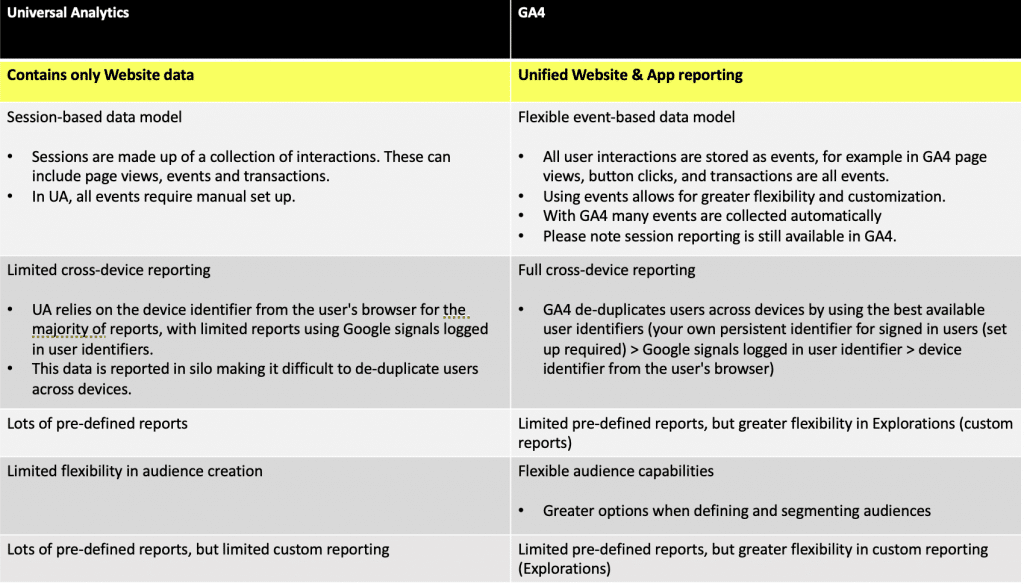GA4 vs Universal Analytics: How do they compare?
Since the launch of Google Analytics in 2005, the platform has been through many iterations, with the latest generation, GA4, released in October 2020, arguably the most significant change to date. However, with the previous generation, Universal Analytics (UA) so entrenched within many businesses’ reporting, it is no surprise that even now, over a year later, GA4 is still met with reluctance and trepidation from clients and colleagues alike.
Supposedly Google’s vision for GA4 was to unify web and app data in one user-friendly interface, whilst retaining the features and functionality users have come to rely upon from UA. Based on my own experience and feedback from clients, I am not convinced this has been fully realised yet.
So, in an effort to help our clients and other businesses step forward with GA4 – and be in the best position to take advantage of any future new features, we will be publishing a series of blogs on the basics of GA4.
To start with, I wanted to cover the key changes between UA and GA4.

Now that you’re comfortable with the key differences in the products, my recommendation to all UA users would be to (at the very least) get your GA4 property set up now, so that it is ready for future reporting. While it is unlikely that UA will disappear overnight, Google will be focused on developing new features in GA4, so it would be advantageous to get familiar with the platform and new terminology now.
If you have any GA4 queries, or need help setting up GA4 for your business, please do reach out. In the next article in this series, we will be covering reporting in GA4.
Update: Google has announced that it will be sunsetting Universal Analytics on July 1st 2023.
About the author:
Faye is the Analytics Lead at CreativeRace, heading up our Analytics & Reporting function. Previously, Faye worked at Jaywing for seven years, working with clients such as Kempinski, QHotels, TeamSport, and Hermes.

























